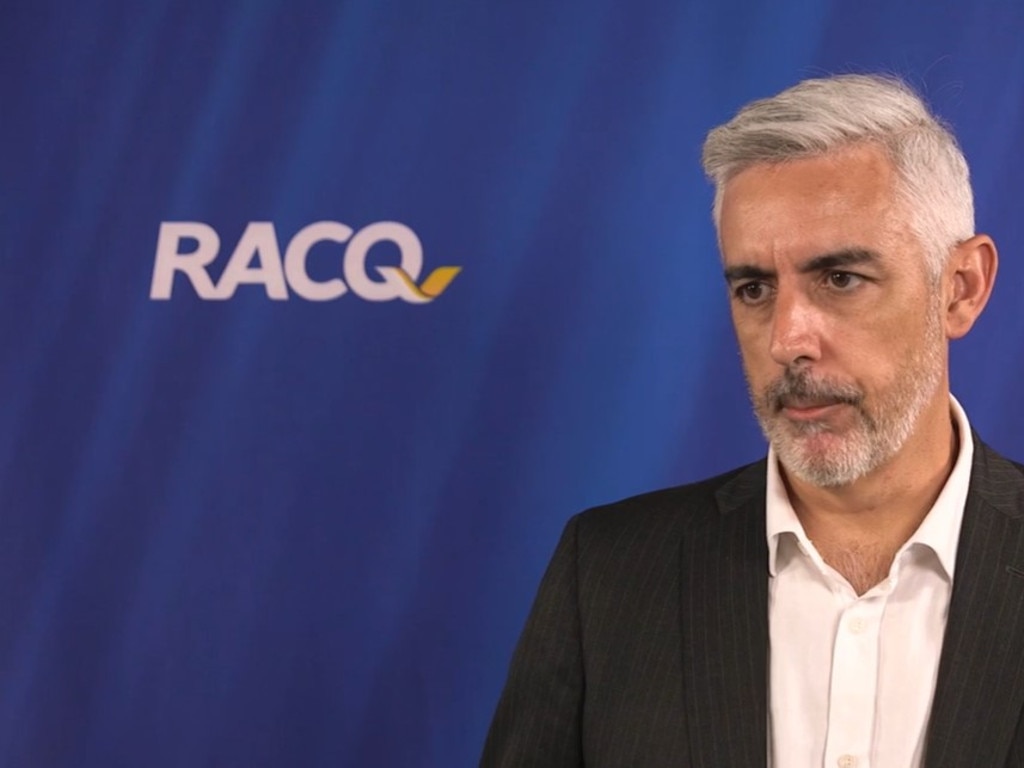How restoration of rail could provide relief on road deaths after worst year in more than a decade
A transport community member has come up with a left-field approach to reduce road fatalities in regional areas, as fresh details from the RACQ show the sobering statistics on driving in Queensland.

Regional News
Don't miss out on the headlines from Regional News. Followed categories will be added to My News.
As Queensland’s road toll reaches a grim milestone, one transport industry figure has proposed a radical approach to stopping the tragedy in regional areas.
The state’s motoring body RACQ is predicting that 2024 could be the “most deadly year on the roads in 15 years” as Queensland is tracking to break more than 300 road fatalities this year.
Two-thirds of road deaths around Australia have occurred on regional roads, with many believing it is a regional issue - whether it being road quality, unexperienced or overconfident drivers, higher drink driving numbers or lack of alternative transport such as public transport.
Southern Queensland and South West Queensland average 1.09 road deaths every week, making it one of the worse regions to be a driver, with the joint-highest fatality road rate in Queensland.
As at December 11, the road toll is 287 – 21 deaths higher than the same time last year - as road fatalities have grown consistently year on year since 2020.

RACQ general manager of advocacy Joshua Cooney said with Christmas around the corner, a notoriously busy time on the roads, the confronting reality is the road toll was likely to surpass 2022’s 13-year high.
“In that year 297 people died on Queensland roads and we’re tracking towards exceeding that figure,” Mr Cooney said.
“Before Covid, the road toll was trending down and if it continued on that trajectory, road deaths would be closer to 200 but tragically we’ve gone backwards.
“Despite new cars getting safer with upgraded technology, far too many people are still dying on our roads. It’s unacceptable and government must intervene and work to improve our road safety culture.”
The Annual Road Safety Survey found aggression on roads is increasing and more Queenslanders were doing the wrong thing on our roads.
A shocking 77.2 per cent admitted to speeding, 41.4 per cent to driving tired, and 29 per cent to driving distracted.

“It’s clear we have a road safety culture issue in our State, with some motorists continuing to break the law, risking their lives and the lives of others,” Mr Cooney said.
Although only being 4 per cent of registered vehicles in Queensland, Motorcyclists make up a harrowing 26 per cent of road fatalities.
Transport historian and rail expert Phil Buckley said people in regional areas “need access to increased public transport” to get people off often dangerous rural roads.
“Most country branch (rail) lines shut down in the 1970s and ‘80s, which forces everyone to drive, forces congestion on the roads and forces people on the road who shouldn’t have to be there if there was a train,” Mr Buckley said.
With barely any buses or trains travelling between rural population centres - and if there is, on an infrequent schedule - it makes travelling impossible via public transport even with the “very limited” bus networks in regional areas, particularly northern NSW and southern Queensland.
“There are these lines (already built) in regional areas, like Armidale to Tenterfield which are major issues as the people need to have access to public transport,” Mr Buckley said.
“It’s like cutting the trains off at Sydney in areas like Hornsby or Parramatta and saying, well everyone outside you’ll just have to get a bike or walk into the city.
“The uproar would be phenomenal, but this is what they’re not understanding, that this thought is being transplanted into the bush and people are having to walk, ride or drive to get around.

“I object to councils and MPs are ripping up (historic) rail lines to build rail trails, but they can be built to leave these (historic rail) corridors in place and leaving the infrastructure.
“You could then maintain the railway system and move people and freight, there’s no need to see everyday the thousands of trucks on the road when we have all this space with one train being able to move 300 trucks-worth potentially, and save so many people’s lives.
“The likelihood of people being injured and killed rises dramatically with more vehicles on the road, we’re seeing that. Every week there's a number of truck or car crashes. It’s never ending.”
These holidays, RACQ is pleading with drivers to make the right choice, take care on the roads and do everything they can to get to their destination safely.
More Coverage
Originally published as How restoration of rail could provide relief on road deaths after worst year in more than a decade








